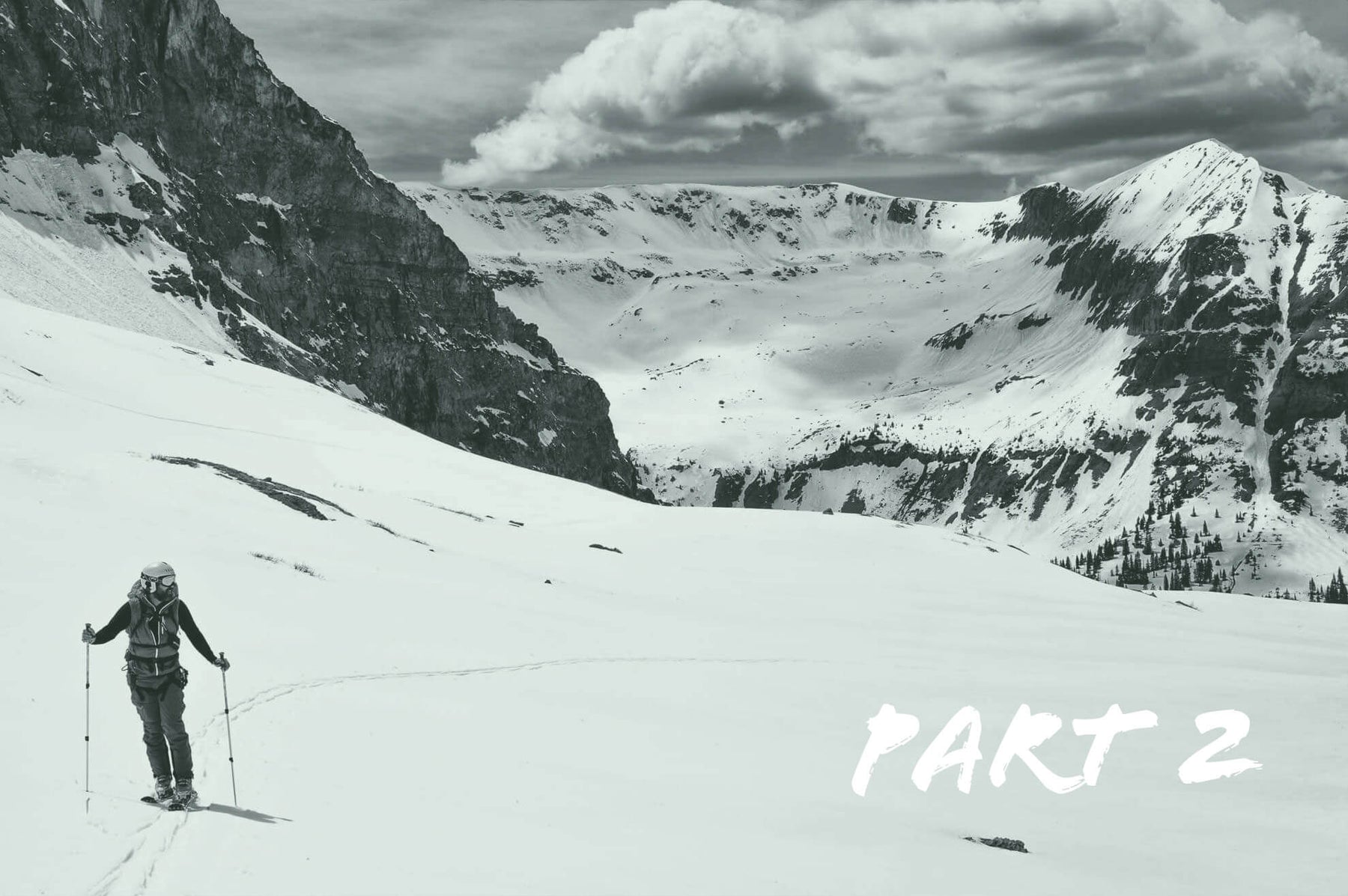So, we’ve discussed the WHY. Now, let’s talk a bit about the HOW. There are some intriguing ways to segue into the human powered world of skiing while reducing the risks you might take by jumping straight into a “real” backcountry scenario. Why not, during the normal resort season, increase your familiarity with new equipment and build on your fitness by taking advantage of Colorado’s great uphill policies (see article: Uphill Ski Policies- by Mountain Chalet’s own, Jim Smith). Or, when the resort season comes to an end, you can utilize this land to skin up and ski down the same terrain that would have cost you more than $150/day. Most ski areas lease their land from the U.S. Forest Service. At the end of the resort season, official ski operations come to an end. However, as citizens, we can access that terrain as public lands.
After a few days of “uphill policy” skiing you’ll have a good head start toward the next logical step into the backcountry.
In the past, we referred to the areas that border a ski resort, or provide you with gated access to some more primitive terrain, as “side-country” or “slack-country.” Don’t be misled by these terms. Backcountry conditions ARE backcountry conditions. Side-country conditions ARE backcountry conditions, and can be a bit deceiving. Be aware that although your proximity to the area may be very close, your commitment as you slide through the gate goes as deep as if you were actually in the deepest backcountry.
Right here, in our own backyard, we have Pikes Peak and its great potential for both shuttle skiing and human-powered ascent. It’s a highly accessible local option, and is often taken for granted because of it. Accessing these areas should be as if you were headed out into the remote. You should approach these scenarios with the same kit and knowledge as you’d bring to the most committing tour. Remember, the avalanche gear we all carry is as good as a computer to us in the backcountry – only as smart as WE are when using them.
With all this out of the way, it should be said that these adjacent areas can be the best terrain to develop your skills when transitioning into the backcountry. When you do make that first glide into the backcountry you’ll have developed some basic skills to make the most of the next level.
It should go without saying that this kind of endeavor requires a new attachment to the knowledge needed to travel in the mountains as safely as is possible. An AIARE (American Institute for Avalanche Awareness and Education) Level-1 course can be found through many fine resources. AIARE Level-1 is a three-day course that will educate you in the basics needed to properly assess the inherent dangers in skiing the slopes you’ve chosen. Locally, in Colorado Springs, we like to turn people toward the knowledgeable guides at Pikes Peak Alpine School.
For some, the knowledge gained through these courses is a wake up call to just how much they may have gotten away with in their past. For others, it might inform them enough to expand on their motivations. It may frighten you enough to choose to stick to on-piste adventures. And to be thorough, we have to mention the necessity of skills practice. I know very few people (excepting guides) that practice enough, myself included. To fill your mind with these skills over a weekend and just assume that it’ll come to the surface at the moment of need is irresponsible, at best. Deadly, at it’s worst. However it affects you personally, this knowledge and practice has informed you enough to put some bookends on your endeavors. All things lead to YOU making YOUR best decision.
And, once again, NO LIFT TICKET REQUIRED. EVER.
In Part 3, we look at the WHAT of your journey into the backcountry. Find the next blog post easily on the bottom right side of this post/page. And always know, we're here at the Chalet to help you along your unique journey to enjoy our beautiful outdoors!



